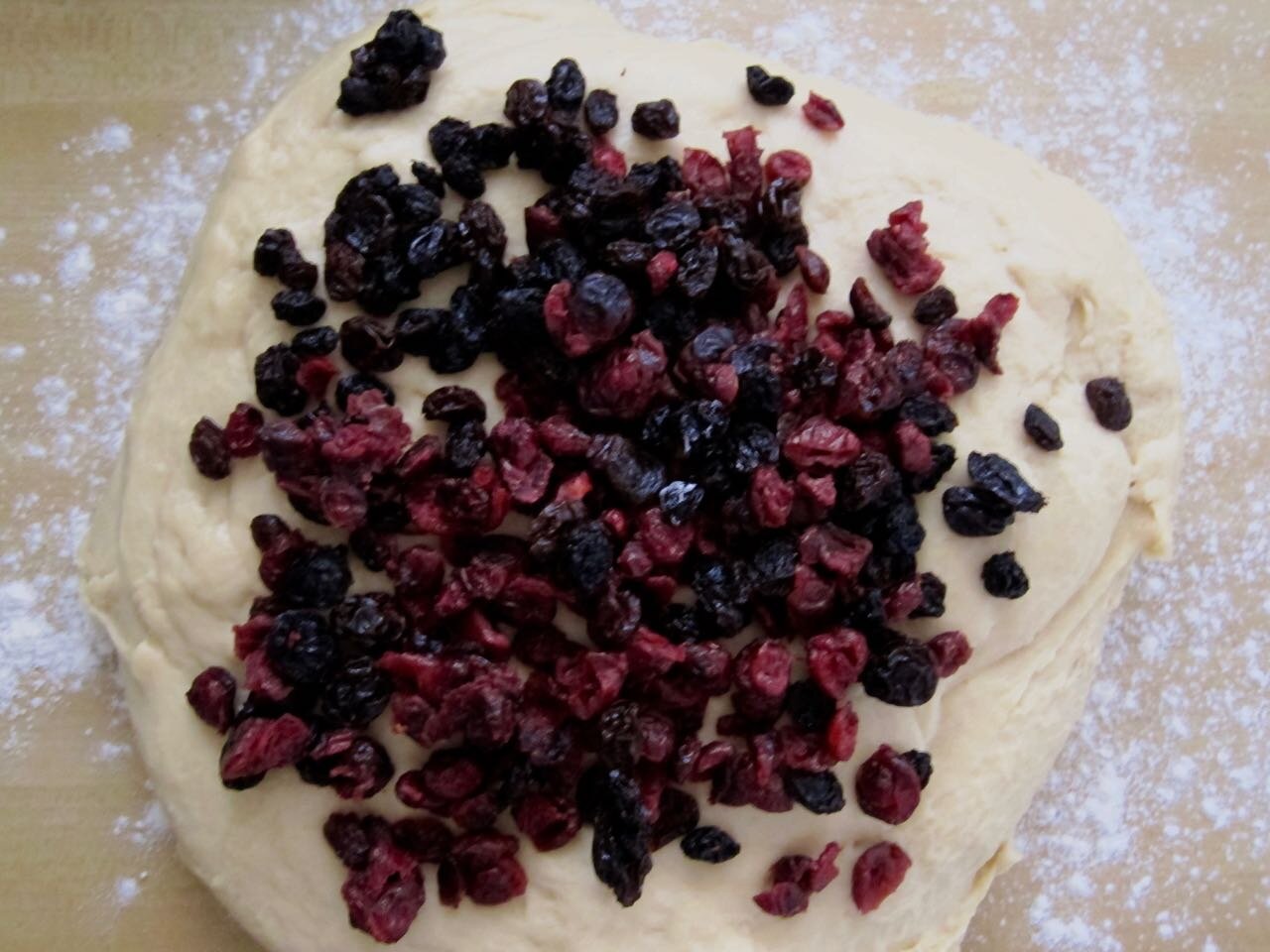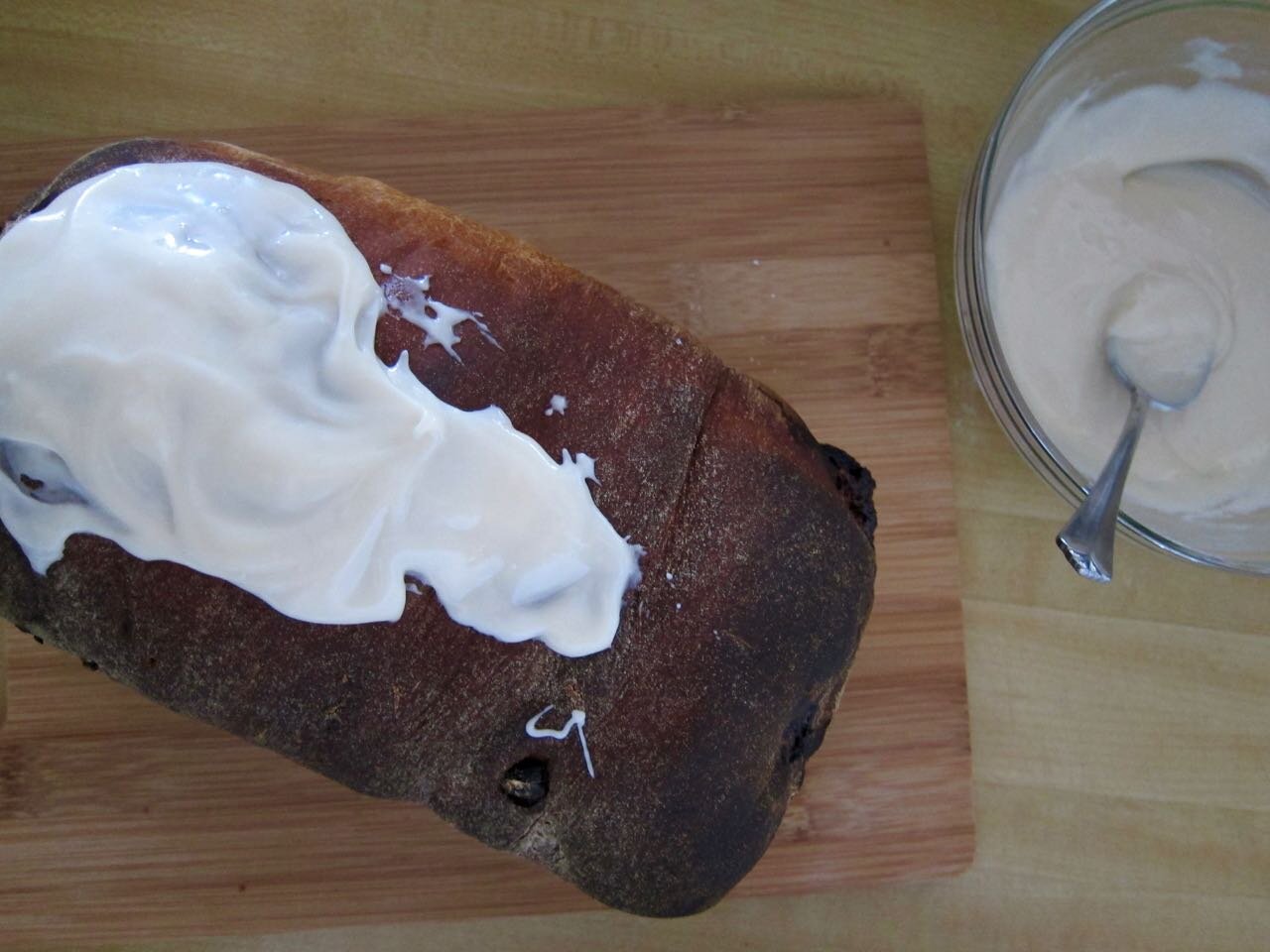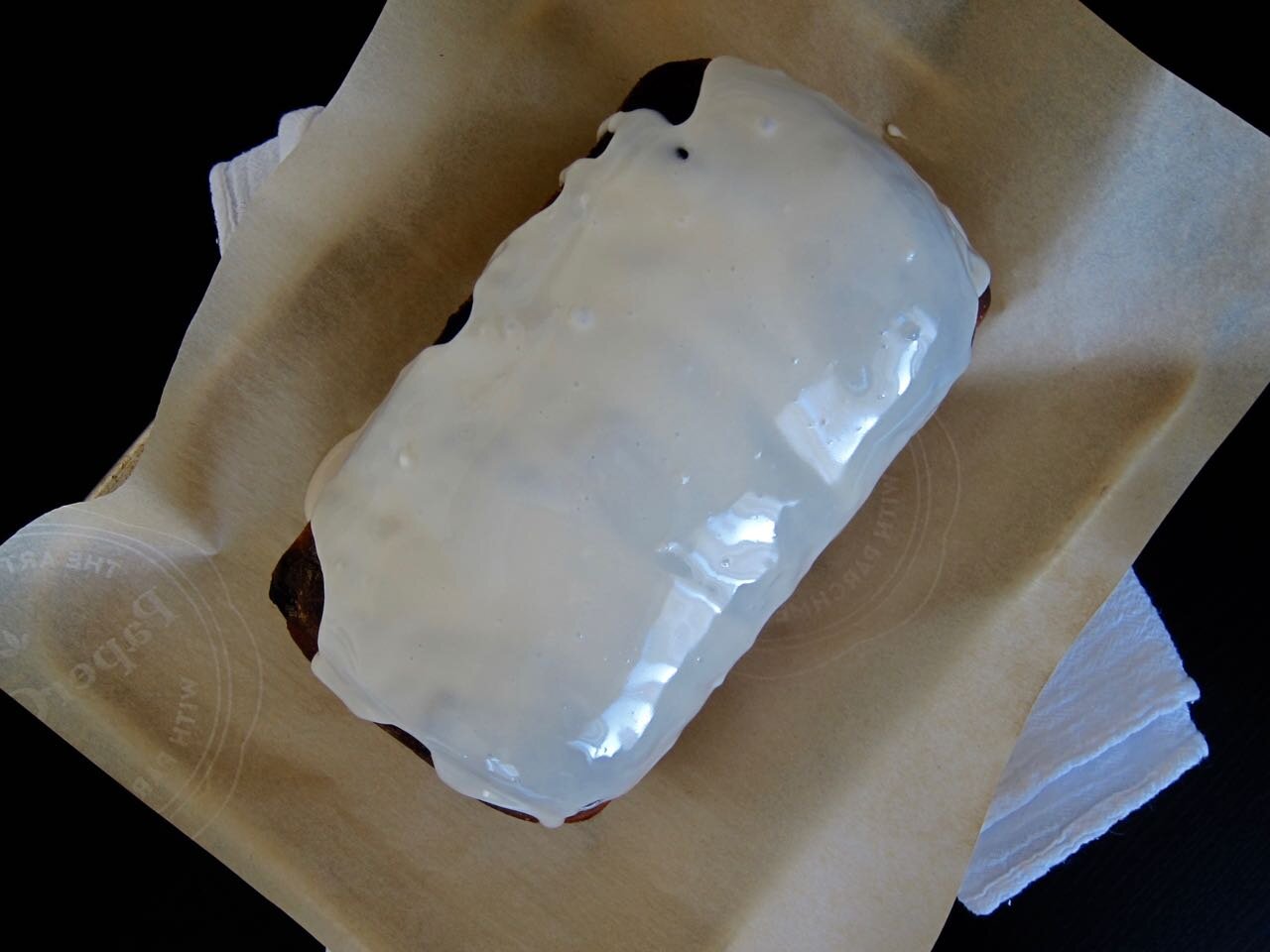I apologize for bringing out, mid-July, perhaps one of the least summery recipes I could present. I get that cinnamon swirled carbs don’t exactly evoke hot, sunny beaches or warm, grassy days and that you’d probably be much more eager for something frozen or BBQ-ready. However, it’s two weeks ‘til Fogust, I don’t own a BBQ, and I’m in more of a cozy mood these days, so here’s a cozy loaf all snuggled in on itself, swirled with cinnamon and dried fruit and dripping with a sugary glaze whose only purpose is to bring the sweetness just to the edge of too much.
I promise, a thick slice of this makes an excellent breakfast with a mug of coffee or tea, or as a welcome 3 pm snack. Let’s all adopt the British afternoon tea break, because here’s a perfect excuse.
Finding the perfect recipe to evoke the store-bought iced cinnamon swirl bread we all know (and love or hate) was not that easy. Ultimately, I realized that I probably wouldn’t be able to fully replicate the artificial flavors and plasticky glaze, nor do I want to, so I went in search of a homier, butter-filled option. I started where I’d been before, with Martha Stewart’s recipe for cinnamon swirl bread from her Baking Handbook. That recipe was one of the first baking projects I ever made over a decade ago after bringing home my brand new Kitchen Aid mixer. I remember it being a huge success and loving the filling. Then I never made it again.
So, when I went back to it as a starting place for a homemade iced cinnamon bread, I was a little surprised that it didn’t live up to my memory. My baking has come a long way since 2009 and maybe it’s just harder to impress myself, or maybe, as I frequently run into with Martha’s recipes, there is a wide margin for user error and you really have to know where the trouble spots are. I can never tell if this is due to poor recipe testing/writing or due to her team trying to market recipes as fool proof and easy when they still require some amount of skill or experience. In any case, I got far luckier in 2009 than 2019, and my first round of loaves last year came out burned on top and rather chewy, not the plush, springy successes I remembered.
After a brief detour to a different recipe, I decided there was still more to like than hate about this one, not least because the filling tastes like the middle of a cinnamon toaster strudel. I liked that it had the richness of eggs and that everything is added at once to the mixer. So I kept trying, and I’ll still recommend this recipe, but there are some notes I’d add in the margins if I were the type to write in my cookbooks.
This recipe is written in a way that assumes all ovens and all mixers are the same, so the time cues aren’t going to help. When kneading the dough, you might need to go beyond 5 minutes to get the dough to the right consistency. You want it very smooth, and it may still stick to the sides of the bowl a bit, even though the original recipe says it will “pull away from the sides”.
Tent your loaves!!! There’s sugar in this dough, and sugar is sensitive to the heat of the oven. I have never made this where the tops didn’t burn black without tenting. Trust me, you need some foil if you don’t want, bitter, chewy crust.
Really work to get a good seal on the bottom of your loaves. If not, at least one loaf is likely to have the filling burst out somewhere. In any case, baked these on top of a baking sheet. I still have charred cinnamon sugar filling on the bottom of my oven.
These loaves are pretty massive, so depending on your oven, 45 minutes might not be enough to get them fully baked through. Test the dough for doneness with a thermometer to be sure. You want to see the internal temperature reach 200 degrees, but make sure you are testing the dough and not the molten sugar inside.
Iced Cinnamon Swirl Bread with Dried Fruit
Adapted from Martha Stewart. This recipe works with any kind of dried fruit you like, but I really love it with dried cherries. This recipe makes enough for two pretty large loaves, but is easily cut in half if you don’t need a supply.
For the bread:
1/4 oz instant yeast
2 cups milk
2 lbs 2 oz all purpose flour, plus a little more for your counter
1 stick unsalted butter, softened and cut into cubes
1/2 cup sugar
2 eggs
2 1/2 tsp kosher salt
1 cup dried fruit of your choice
1 tbs cinnamon
For the filling:
1 1/2 cups sugar
2 tbs cinnamon
1 egg, beaten
For the glaze (optional):
3/4 cup powdered sugar
1-2 tbs milk or water, depending on how thick you want your glaze
1/2 tsp vanilla extract
In the bowl of a stand mixer fitted with the dough hook, combine the yeast, milk, flour, butter, sugar, eggs, and salt. Turn mixer to lowest setting and mix until fully combined, about 3 minutes. Then, raise the speed to medium-low and mix to knead the dough until fully smooth, about 3-5 minutes. The dough will be very slack and may still stick a bit to the sides of the bowl.
Dust your counter or work surface with a bit of flour and turn the dough out, patting into a round about 9 inches across. Sprinkle the cinnamon and dried fruit over the dough and then gently knead everything together until the cinnamon and fruit are incorporated throughout. Gather the dough and place in an oiled bowl (you can use the mixing bowl) and cover with plastic wrap. Let the dough rise about 1 hour, or until doubled in volume.
Turn the dough back onto the floured surface and pat into a round again. Then, fold the dough. Bring the top third down, then the bottom third up, then fold the right side over, then the left. Press down to seal the seam, then return to the bowl seam side down. Let rise another 40 minutes, until doubled in size again.
Once dough has risen, you are ready to fill. In a small bowl, combine the sugar, cinnamon, and two tablespoons of water. Divide the dough in half. One at a time, roll and fill the dough. Dust more flour on the counter and roll half of the dough into a rectangle, about 12x10 inches. Brush the dough with the beaten egg, then sprinkle on half the filling mixture. Fold the long sides of the rectangle in about 1 inch, then take one edge of the short side and roll, forming the dough into a log. Repeat with the remaining half of dough, reserving some of the beaten egg if you want to do an egg wash before baking.
Butter or grease two loaf pans and place the rolled dough halves seam side down into the pans. Cover loosely and set aside to rise for a final time, until the dough sits just above the rim of the loaf pan, about 30 minutes. Preheat oven to 425 degrees.
Brush tops of loaves with beaten egg, or if you plan to ice them, you can skip the egg wash. Place the loaf pans on a parchment lined baking sheet to catch any drips and bake the loaves about 45 minutes, rotating halfway through. You may need to cover with foil about halfway through if the tops of the loaves appear to be browning too quickly or burning (the sugar in the dough makes this pretty likely). Remove loaves from oven and let cool in the pans for 10 minutes, then turn out onto a wire rack to cool completely.
If icing the loaves, let cool completely. Then, stir together powdered sugar, milk or water, and vanilla extract into a smooth glaze. Spoon the glaze over the top of the loaves and let set, or slice into thick pieces and enjoy immediately.
Notes:
Bread will last a week at room temperature, or wrap loaves in foil and freeze. You can also slice and freeze individual slices, well-wrapped.
The recipe above calls for incorporating cinnamon and the dried fruit into the dough, but an alternative method is to skip the cinnamon in the dough, and add the dried fruit with the filling, so the pieces of fruit sit in the spiral. This will save you from having to do Step 2 before the initial rise, but I do like having the cinnamon and fruit interspersed throughout the dough.







